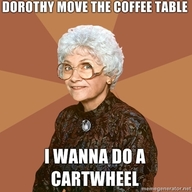Today, I want to talk about children’s books. I am so sick of these children’s books that my one-year-old makes me read each day. You try to see how charming “Guess How Much I Love You” is after the 80th time! All right, nutbrown hares, we get it, you love each other, great! And yes, brown bear, brown bear, you see a red bird, awesome, and red bird, red bird, you see a blue horse, wonderful.
But then I got this great idea! I should write children’s books! They are short as hell! And if one becomes a best-seller, I’ll be rich, rich! The conventional wisdom is to write about stuff that you know. And what do I know? Nonprofit work, of course. I can write children’s books about nonprofit work! Here are some that I’ve started working on. There is so much that children can learn from our field. Just imagine parents reading these books to their kids each night. Maybe these books might even inspire some kids to grow up wanting to be nonprofit warriors. Read these texts below, and let me know what you think, and other children’s book ideas you have.
The Runaway ED
 Once upon a time there was an Executive Director, and she wanted to run away. So she said to her board chair, “I am going to run away.”
Once upon a time there was an Executive Director, and she wanted to run away. So she said to her board chair, “I am going to run away.”
Her board chair said, “If you run away, I will come and find you and bring you back, for you are my Executive Director.”
“If you come and find me,” said the ED, “then I will become a strategic plan and hide on the shelf.”
“If you become a strategic plan and hide on the shelf,” said her board chair, “then I will become an intern who accidentally stumbles on you.”
“If you become an intern who accidentally stumbles on me, then I will become a raw piece of cauliflower on a snack platter at a community gathering, which no one will eat.”
“If you become a raw piece of cauliflower on a snack platter at a community gathering, which no one will eat, I will become a desperate hungry vegan and find you.”
“If you become a desperate hungry vegan who will find me,” said the ED, “then I will become an invitation-only foundation that is like Fort Knox to get through.”
“If you become an invitation-only Foundation that is like Fort Knox to get through, I will become the best friend of one of the trustees’ daughters and I will get through to you.”
“Aw, shucks,” said the ED, “well, in that case, I might as well stay here and be your ED.”
And she did.
“Can I have a raise?” she asked.
“No.”
If You Give a Board Treasurer a Cookie
If you give a board treasurer a cookie, he may ask who’s paying for the cookie.
When you answer that you’re using funds he approved on the budget, he’s probably going to ask to see a copy of the budget.
When you give him the budget, he’s going to ask for the latest balance sheet.
When you show him the balance sheet, it may remind him of a training he attended about the importance of opening a line of credit.
He’ll ask you to open a line of credit. He might get carried away and say he’ll go to the bank himself.
When he goes to the bank, he might notice that your signatories are not up to date.
He’ll send out an email to the finance committee asking to discuss this at the next meeting.
You’ll have to coordinate the meeting and remind everyone. And of course, you have to get snacks.
And chances are…cookies will be on sale.
The Very Tired Development Director
In the light of a fluorescent lamp, a Development Director sat hunched over an organization’s fundraising plan.
On Monday, he organized one luncheon, but the organization still needed money.
On Tuesday, he applied to two employee giving campaigns, but the organization still needed money.
On Wednesday, he launched three crowd-funding initiatives, but the organization still needed money.
On Thursday, he wrote four grants, but the organization still needed money.
On Friday, he called five major donors, but the organization still needed money.
On Saturday, he wrote 10 thank-you emails, sent out 18 handwritten notecards, went to coffee with 5 potential donors, checked the grant calendar, looked at the annual event program brochures of 9 similar organizations to scan their sponsors, called 4 board members to remind them of their tasks, emailed 3 local businesses, and led a program tour. He was exhausted.
The next day was Sunday again. The Development Director stayed at home and spent time with his family, and he felt much better.
He was due for a much-needed vacation, so he took some time off. A week later he came back and…
He was still an awesome Development Director who continued to keep the organization and its important work going.
The Giving Nonprofit
Once there was nonprofit organization, and it loved the community and the funders supporting its work. Every year, the organization would continue to serve the people in its community. And each year, funders would provide funding so it could continue its programs. And the organization loved its funders and its community very much. And the community was happy.
But time went by, and the nonprofit and its programs grew older. The funders didn’t come as frequently, and the nonprofit was often left alone.
Then one day, a funder passed by, and the nonprofit said, “Come, funder, come to my programs and meet the kids we serve and let’s make the community better.”
“My foundation has shifted its priorities,” said the funder, “we only fund new and innovative programs. Do you do anything new and innovative?”
“I’m sorry,” said the nonprofit, “we have been building this program for several years. It is not new. But it is good, and it serves many wonderful people.”
And the funder left, and the nonprofit was sad again.
Then one day, another funder passed by, and the nonprofit said, “Come, let’s have lunch and talk about our community. Support our work and help kids achieve a brighter future.”
“We no longer fund direct service work,” said the funder, “that’s a Band-Aid solution. Do you do Collective Impact?”
“I’m sorry,” said the nonprofit, “we have been involved, but not significantly, since our community still needs direct service.”
And so the funder left and went far, far away. The nonprofit was now very tired and sad.
And after a long time, another funder came by.
“I’m sorry,” said the nonprofit, “I don’t have anything innovative, just good programs that serve people. My programs only target specific neighborhoods, not whole states, in case you want something farther reaching. The programs serve unique populations, so they might not be scalable, in case that’s what you seek. I am not sure I have anything that you might like to fund.”
“It’s OK,” said the funder, “we provide general operating grants focused on outcomes, and I heard you do some great stuff, so here is a grant so you can continue to serve the community.”
And the nonprofit was happy.
And its staff went to happy hour.
***
For more nonprofit kids’ books, read “Where the Sustainable Things Are” and other nonprofit children’s books
And also part 3, “Green Eggs and Strategic Plans” and other nonprofit children’s books
***
Make Mondays suck a little less. Get a notice each Monday morning when a new post arrives. Subscribe to NWB by scrolling to the top right of this page and enter in your email address.
 Happy summer, everyone. A colleague wrote me recently, saying “I just received an email from a well-known foundation (that supports us) mentioning that they ‘are all out of town all of this week for a conference in Hawaii.’ I just spent 2 months working my a** off on our annual event raising just $35,000…” She asked me to write about things that funders should never mention to folks working in the nonprofit world
Happy summer, everyone. A colleague wrote me recently, saying “I just received an email from a well-known foundation (that supports us) mentioning that they ‘are all out of town all of this week for a conference in Hawaii.’ I just spent 2 months working my a** off on our annual event raising just $35,000…” She asked me to write about things that funders should never mention to folks working in the nonprofit world



